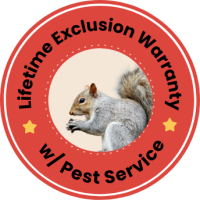
Hey there folks, thanks again for tuning in for another informative article to help you with your extermination needs. We will be covering the topic of the different types of termite treatments, choosing a qualified pest control company and the common species of termites we have in Georgia. Allow me to introduce myself. My name is Jay Vincent and I own and operate Smart Solutions Wildlife Removal. What does a wildlife removal company have to do with termites? Well… termites are actually in the Animal Kingdom, they are just invertebrates. As an active owner and operator within the industry for over 25 years, I like to take the time to write about these things in order to create local awareness and education within our industry. So without further ado, let me to dive into to the information for you. You can check out more about our termite control and extermination services at https://www.smartsolutionspestcontrol.com/pest-control/
In Roswell, Georgia, the type of termite treatment options depend on the nature and the severity of the infestation, as well as the termite species (most common being subterranean termites like Eastern Subterranean or Formosan termites). Here are some different types of treatments commonly used:
1. Liquid Termiticides
• How They Work: A chemical barrier is applied to the soil around your home to kill and control termites in the soil, voids and crack and crevices. Some of the most effective products are non-repellent, which termites unknowingly pass through and carry back to spread to the colony.
• Best Practice For: Preventing and treating subterranean termites.
• Industry Leading Products: Termidor® (fipronil), Taurus® SC.
• Advantages:
• Provides long-lasting protection (up to 10+ years with proper application).
• Kills termites directly and often eradicates the immediate colony.
• Disadvantages:
• Requires a professional company to applicate the liquid termiticide for safety, warranty and effectiveness.
• Involves some soil disturbance around your foundation but this is a mild disadvantage.
2. Termite Bait Systems
• How It Works: Bait stations are placed around the property and in the soil near the foundation of your home or business. The termites consume the bait and carry it back to the colony, eventually eliminating it.
• Best For: Ongoing monitoring and control of subterranean termites.
• Popular Systems: Trelona® ATBS Annual Bait Stations and Sentricon® System with Always Active.
• Advantages:
• Targets the colony directly.
• Less disturbing than liquid treatments; no drilling or trenching required.
• Provides continuous monitoring.
• Disadvantages:
• Slower than liquid termiticides in terms of colony elimination and may take several months to act if the termites find the bait.
• Requires regular maintenance and inspections by a professional termite company.
3. Fumigation (Tenting)
• How It Works: The entire structure is covered with a tent, and a gas is administered through specialized equipment to penetrate and kill the termites inside.
• Best For: Severe drywood termite infestations (not very common in Georgia).
• Advantages:
• Highly effective at eliminating all termites within the treated zone.
• Disadvantages:
• Very Expensive and involved.
• Requires vacating the property for several days.

4. Borate Wood Treatments
• How It Works: Borate-based pesticide products are applied directly to wood to help prevent termites from feeding on it.
• Best For: Pre-construction treatment and protecting exposed wood in crawl spaces or attics.
• Popular Products: Bora-Care®.
• Advantages:
• Long-lasting and eco-friendly.
• Preventative treatment for new construction or renovations when areas like walls are open or built.
• Disadvantages:
• Not suitable for treating existing infestations in the soil or inaccessible voids.

5. Spot Treatments
• How It Works: Concentrated applications of liquid or foam termiticides are used to treat specific areas with visible termite activity.
• Best For: Small infestations caught early.
• Advantages:
• Less invasive and cost-effective small termite infestations.
• Disadvantages:
• Often times does not address the entire colony.
• Risk of termites moving to untreated areas.
1. Subterranean Termites (Most Common in Georgia)
• Species: Eastern Subterranean Termites (Reticulitermes flavipes) and Formosan Termites (Coptotermes formosanus).
• Habitat: They live in the soil and build mud tubes to access wood from ground to the structure.
• Characteristics:
• Workers are creamy white, soft-bodied with large waists and even wings .
• Soldiers have pronounced large heads and strong mandibles(mouth parts) for defending the colony.
• Damage: Known for causing significant to catastrophic structural damage by eating wood from the inside out.
• Signs of Infestation:
• Mud tubes on walls or foundations and inside or basements and crawlspaces.
• Hollow-sounding wood that is easily probed.
• A large amount of warmers (winged adult reproductive termites) in spring and summer.
2. Formosan Termites (Invasive Subterranean Species)
• Presence: Increasing in parts of Georgia, particularly in warmer southern regions.
• Characteristics:
• More aggressive and destructive than Eastern Subterranean Termites with accelerated and serious structural damage .
• Larger colonies, capable of causing rapid damage to wood and cellulose material.
• Signs: Similar to Eastern Subterranean Termites but with a higher potential for destruction.
3. Drywood Termites (Less Common)
• Habitat: Unlike subterranean termites, they don’t require contact with soil and infest dry wood above ground (e.g., furniture, structural beams).
• Characteristics:
• Smaller colonies compared to subterranean termites.
• Dark brown or tan bodies.
• Signs of Infestation:
• Small, pellet-like droppings(droppings) near wood.
• Create holes in infested wood.
Prevention Tips in Georgia:
• Eliminate moisture issues around your home by reducing water sources.
• Keep firewood and mulch away from the foundation in nice neat and open piles.
• Seal cracks in your home’s foundation and walls to prevent water entry.
• Schedule annual termite inspections with a licensed pest control company.
In summary, choosing the most effective treatment and prevention and
understanding the termite species in your area can help you detect signs early to get ahead of the problem and protect your home and property.

